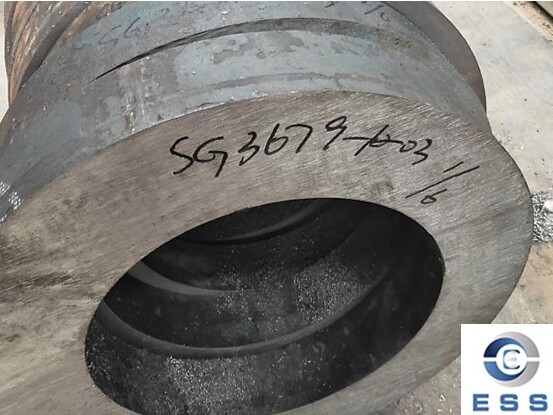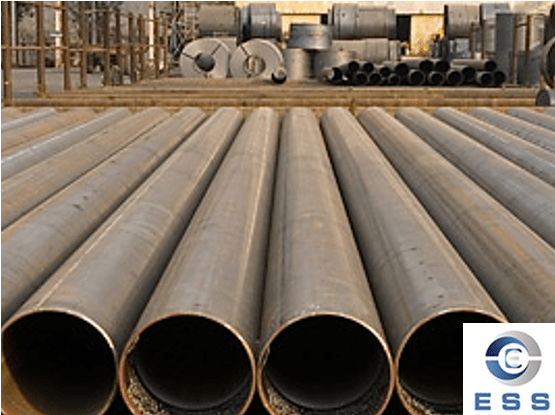
In industrial production, seamless
steel pipe is the key structural material, and its cutting quality directly
affects the processing efficiency and product quality of subsequent processes.
In order to achieve high-precision, high-efficiency and low-cost cutting, it is
particularly important to choose a suitable cutting method. Below we will
introduce several common and proven seamless steel pipe cutting methods, and
explore their respective application scenarios and advantages and
disadvantages.
Top 4 cutting methods for seamless steel
pipes
In the seamless steel pipe cutting process,
in order to ensure cutting quality and efficiency, the following best methods
are worth recommending:
1. Mechanical cutting
Mechanical cutting is the use of mechanical
equipment to cut seamless steel pipes. Common methods include sawing and
grinding wheel cutting.
These methods are suitable for cutting
smaller seamless steel pipes, and require the cutting section to be flat and
smooth, so they are not applicable to the cutting of some large seamless steel
pipes. For example, when manufacturing pup joints,
mechanical cutting can provide higher precision and surface quality for the
cutting of small seamless steel pipes.
2. Flame cutting
Flame cutting is a method of cutting
seamless steel pipes using high-temperature flames. Commonly used methods
include gas cutting and plasma cutting.
This method is suitable for cutting large
seamless steel pipes. It has the advantages of fast cutting speed and low cost,
but it is easy to cause deformation and oxidation. In the oil and gas industry,
flame cutting is a more economical and practical choice for cutting large
seamless steel pipes such as drill pipe and oil casing
pipe, although subsequent treatment is required to eliminate the defects
caused by cutting.
3. Laser cutting
Laser cutting uses a high-energy laser beam
to irradiate the surface of seamless steel pipes to quickly melt and vaporize
the material, thereby achieving cutting.
This method has high precision and high
speed, and is suitable for cutting seamless steel pipes of various materials,
especially thin-walled laser steel pipes. However, the cutting equipment cost
is higher and the skill requirements for operators are also higher. In the
fields of machinery manufacturing and aerospace, laser cutting can meet the
strict size and surface quality requirements for the cutting of seamless steel
pipes with high precision requirements such as the precision
tube.
4. High-pressure water cutting
High-pressure water cutting is an
environmentally friendly and efficient cutting method. It uses high-pressure
water flow to impact seamless steel pipes to achieve this kind of cutting.
The advantages of this method are good
incision quality, no deformation, and no pollution, but the cost of
high-pressure water cutting equipment is relatively high and it is only
suitable for some specific materials. In the food processing and pharmaceutical
industries, high-pressure water cutting is an ideal choice for seamless steel
pipe cutting with high hygiene and cleanliness requirements because it does not
produce heat effects and pollution.
Comprehensive selection suggestions
In practical applications, the following
factors should be considered comprehensively based on the size, material and
processing requirements of seamless steel pipes:
1. Cutting accuracy
When the edge flatness and dimensional
accuracy requirements are high, laser cutting and high-pressure water cutting
are more advantageous.
2. Processing efficiency
For large quantities or large-size steel
pipes, flame cutting provides a fast and economical solution.
3. Equipment cost and environmental
protection requirements
In occasions with strict environmental
protection and subsequent processing requirements, although high-pressure water
cutting is more expensive, it can ensure that the cutting quality is not
affected by heat and reduce the risk of secondary processing.
Summary
In summary, different cutting methods can
be selected for different seamless steel pipe materials and cutting
requirements. When choosing a cutting method, you need to consider factors such
as cutting accuracy, speed, cost, and environmental protection, so as to choose
the method that best suits you.
Read more: Seamless Steel Pipe Sizes













 Eastern Steel Manufacturing Co.,Ltd not only improve product production and sales services, but also provide additional value-added services. As long as you need, we can complete your specific needs together.
Eastern Steel Manufacturing Co.,Ltd not only improve product production and sales services, but also provide additional value-added services. As long as you need, we can complete your specific needs together.










